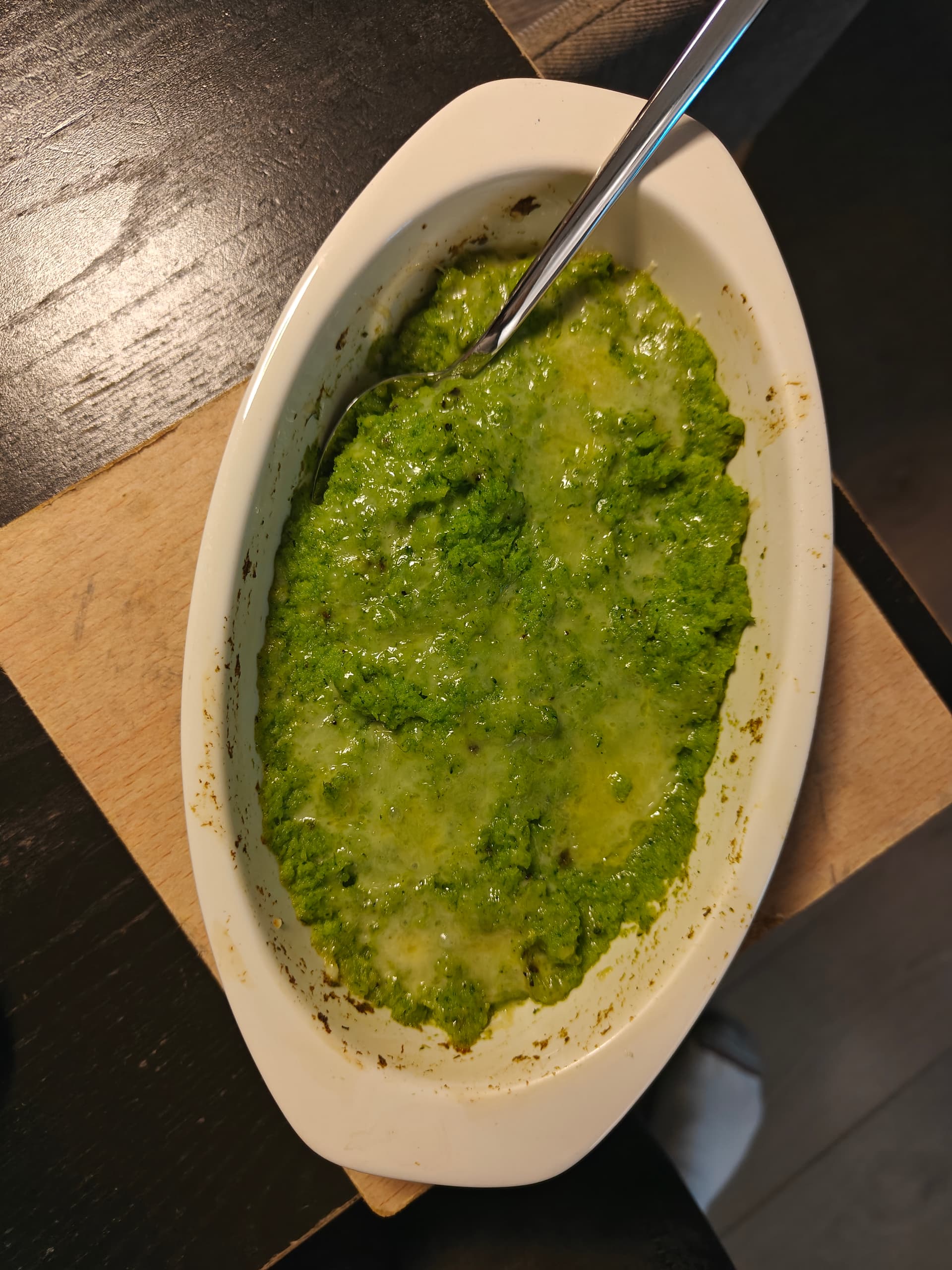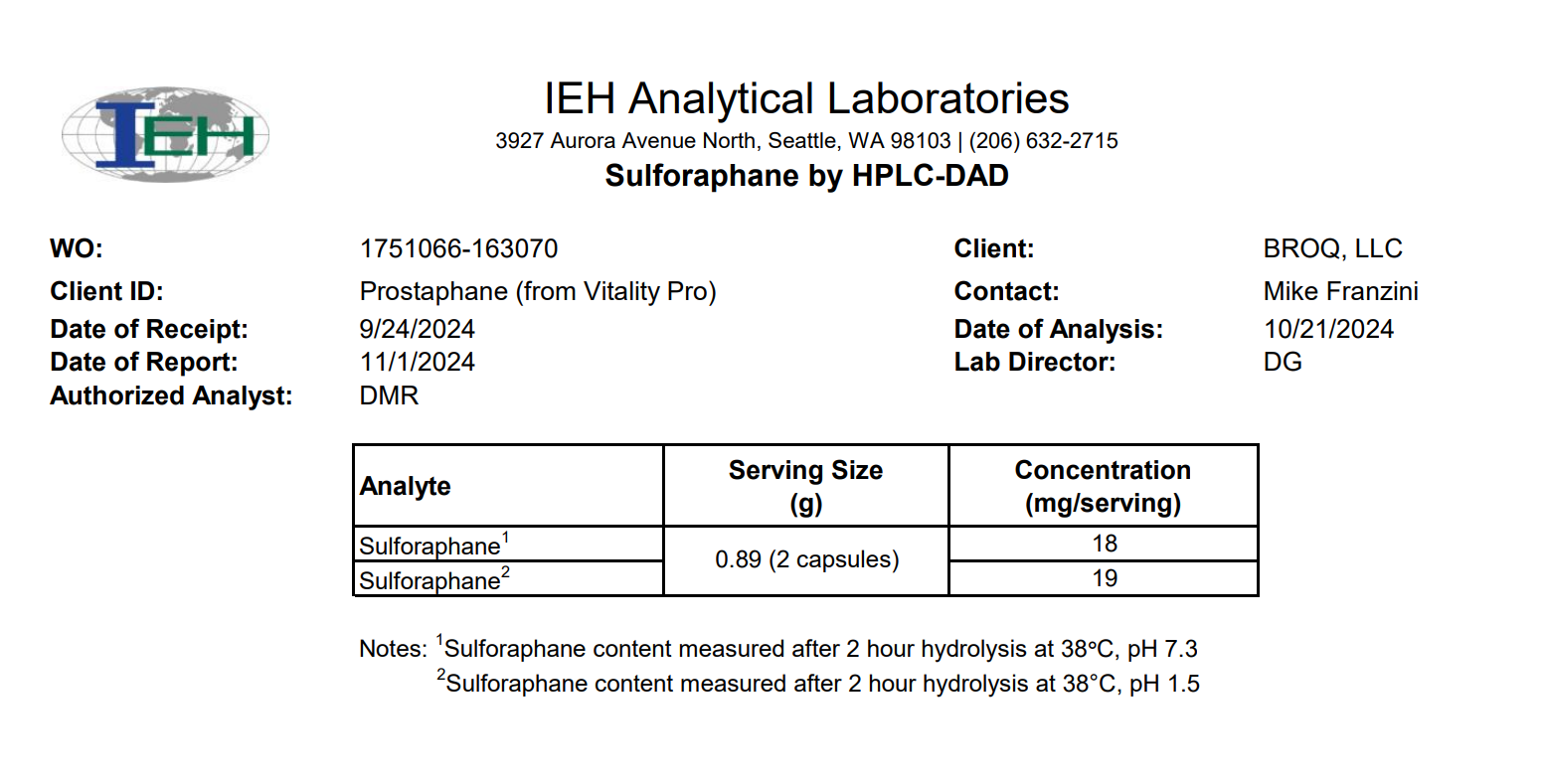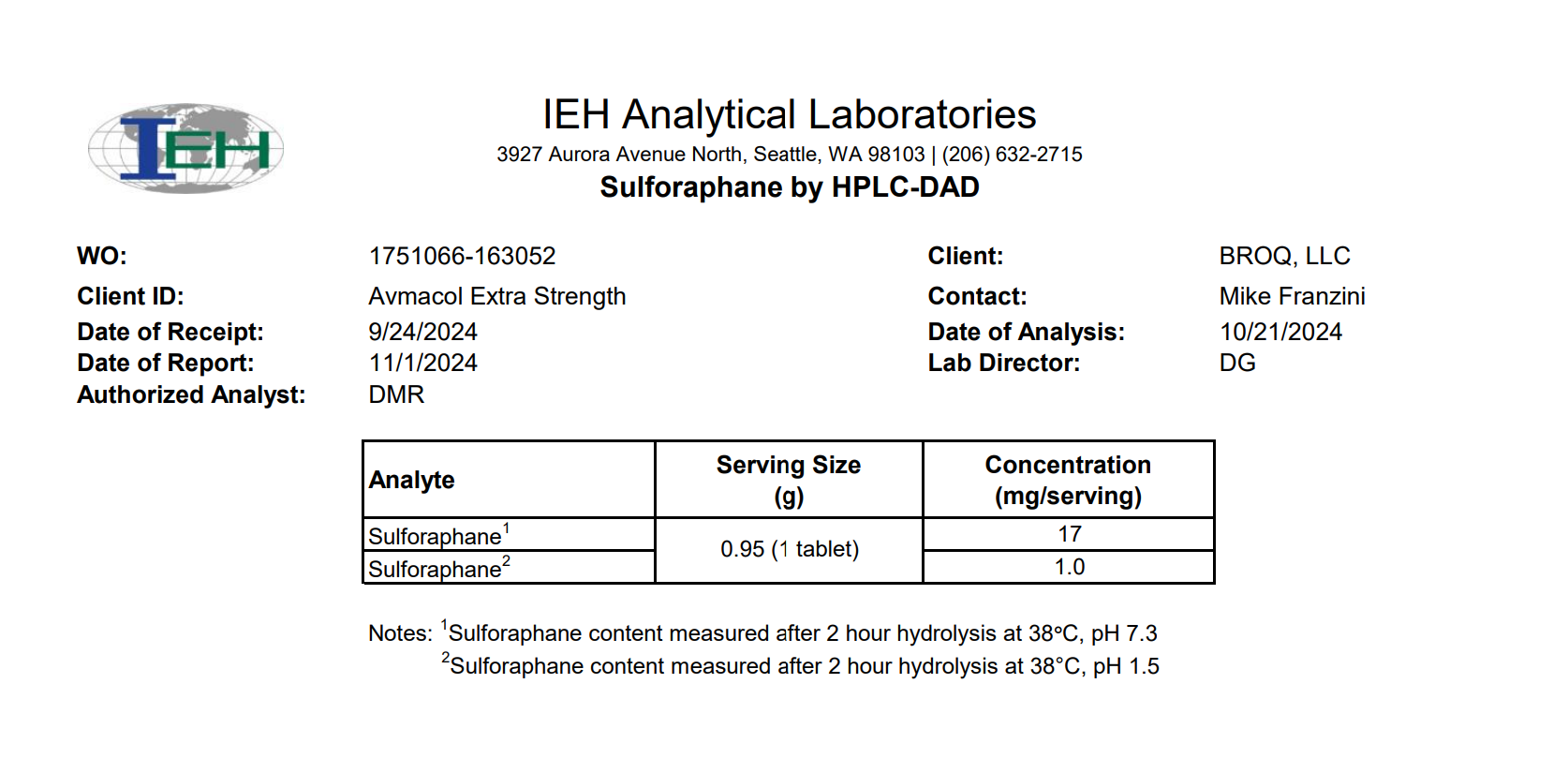Helps prevent Alzheimer’s in mouse model, this shouldnt show up in worms.
I emailed both Ingood by Olga and Dynveo and they confirm that Sulforaphane by Dynveo and Prostaphane both contain Sulfodyne but they refuse to answer whether they’re identical or not.
After reading that broccoli is one of the best sources of sulforaphane, I’ve concocted this after work snack. I take a head of broccoli, blend it to a fine mash and let it sit for an hour so the sulforaphane can form. Add black pepper EVOO and some cheese on top for flavour. Bake at 200 degrees for 20 minutes and you have a broccoli dish that has the consistency and taste of mashed potatoes, although it is green. Actually the taste probably comes from the mozzarella. But I think it’s a healthy snack before dinner.
Delicious, but…snack?? To me it would be the best part of dinner itself !!
Have you all discussed making your own broccoli sprouts?
It’s the cheapest and easiest thing to do! If I can do it, ANYone can!
I was on a sprouting roll last year, but we have so many annoying little flying bugs in our kitchen this year (ARGH!) I’m sooooo icked out about the thought of them invading my sprouts! I really need to start again.
However, the laboratory report results published on Broq show that Prostaphane capsules (from Vitality Pro) perform better compared to Avmacol Extra Strength.
She doesn’t say she’s using it because of some measure or some science. They’re probably sending it to her to get some publicity. She just says she’s using it.
The test for avmacol above looks pretty inconsistent.
I’ve just almost finished up my big supply of broccomax, avmacol and broq and was able to snag on ebay a bottle of broq for $35 around 50 cents each and 3 bottles of broccomax for $36 around 12 cents each to get me a few more months.
I just visited his site. I find it increible that any sane person would take that many supplements.
His supplement list costs a small fortune.
I’ve seen a few videos of him, I think money is not a problem for him, a bit like Bryan Johnson!
Seems to be working out alright for him by the looks of it
True, but probably most of it is a waste.
True, but he’s not sure which. Reminds me of that saying by John Wanamaker, “Half the money I spend on advertising is wasted; the trouble is I don’t know which half.”
We could take some educated guesses but that’s about it. He also does stuff beyond supplements — hbot, pemf, hydrogen water, red light, etc. not to mention a ton of strength, conditioning, and cardio.
I have to say he’s doing something right. What exactly that is is hard to tell from all the noise.
He also proves that hypomegapolypill is not a bad strategy. He takes the most supplements and meds I’ve seen and he’s doing amazing.
Throwing my 2 cents in. I like the Broccomax brand because I trust it has what it claims and the price is reasonable. I’m banking on the claims that sulforaphane has for health and anti cancer effects. For me, I get an added benefit because it puts me to sleep. I have it at bedside and pop one when I wake up in the middle of the night. It’s better than a lot of the other things I use for sleep and doesn’t give the dreaded AM grogginess or hangover.
Although investigations of the effects of storage and cooking on the glucosinolate content of broccoli have been performed (Goodrich et al., 1989; Vallejo et al., 2003), surprisingly little research has examined the effects of storage or cooking on formation of sulforaphane in dietary broccoli. In current literature examining the chemoprotective effects of sulforaphane, the assumption is made that sulforaphane is the sole product of the hydrolysis of its precursor glucosinolate, glucoraphanin (2 ) (Fahey et al., 1997; Shapiro et al., 1998). However, a nitrile analog to sulforaphane, sulforaphane nitrile (3 ) [5-(methylsulfinyl)pentane nitrile] may actually be the predominant hydrolysis product of glucoraphanin (Matusheski et al., 2001; Mithen et al., 2003). Sulforaphane nitrile has recently been shown not to possess the anticarcinogenic properties of sulforaphane (Matusheski and Jeffery, 2001; Basten et al., 2002). Thus the potential health benefit of broccoli as a result of sulforaphane formation is compromised by the alternative formation of an inactive nitrile when broccoli is crushed.
In raw broccoli the predominant hydrolysis product of glucoraphanin is sulforaphane nitrile (more than 85%), due to the activity of epithiospecifier protein. However, mild cooking increases the conversions of glucoraphanin to sulforaphane, due to the inactivation of epithiospecifier protein while myrosinase is still partly active.
Slide 16
Optimal heating temp is 80 c (158F).
Slide 12
Time, 4, 8 or 12 minutes.
I was looking into enduracell powder, which is claimed to have 15mg sulforaphane per gram and includes myrosinase within it
For people outside the US, the most common ones would be things like swanson or source naturals which contain far less but some people do still have positive experiences with those too
I’ve tried a few of those Nothing destroys my GI more than BROQ, made me very nausea too. And for some reason I had to try that experiment twice just because I had paid so much for them. Ended up going back to broccoli and sprouts after that experience. I do occasionally take KOYAH Organic Broccoli Sprout Capsules – Freeze-Dried Whole Broccoli Sprouts which claims it’s 3rd Party Tested for Active Myrosinase & Glucoraphanin.
Started taking brussels sprouts two weeks ago. I take it three times a week, based on Jed Fahey’s assertion that sulforaphane can be taken in a hit and run basis. I chop four heads of brussels sprouts (Costco/Kirkland) in the morning, then heat it with broth and mushroom powder in the evening. I take the broth as appetizer before dinner.
I heat the brussels sprouts based on the study I posted above. That study states that without heating, you get sulforaphane nitrile, not plain sulforaphane. Sulforaphane nitrile does not have the anti cancer benefits of sulforphane. The linked study above states that the optimal heat is 70 to 80 c, or about 158F. Optimal time is 8 to 12 minutes. I use my Nuwave stovetop, which gives precise temps.
The choice of brussels sprouts was initially guided by the blogpost below, which claims that 1/2 cup of brussels sprouts contain 104 mg of sulforaphane.
That blogpost claim is further supported by the article from Frontiers of Oncology, linked below:
As per a recent review, broccoli sprouts are the chief source of sulforaphane and are 20 to 50 times richer than mature broccoli as they contain 1,153 mg/100 g, whereas the concentration of SFN in mature broccoli is 44–171 mg/100 g.
I just weighed, and four heads of brussels sprouts weigh 92 grams.
I am still searching to retrieve. But I remember Rhonda Patrick claiming that 20 mg of sulforaphane is a sufficient dose.



